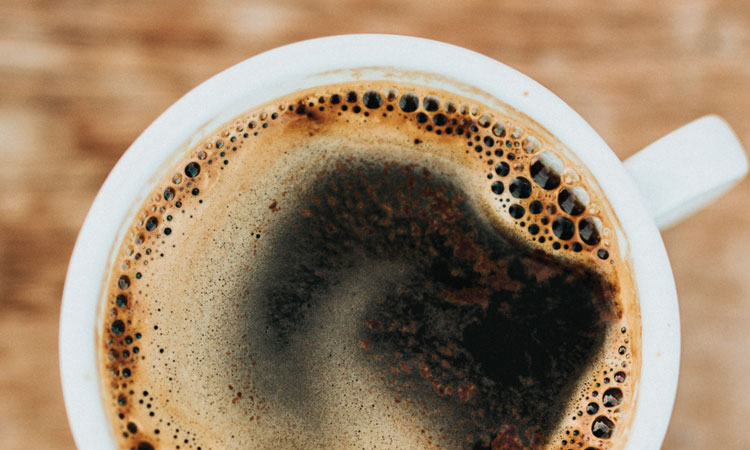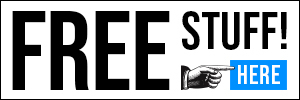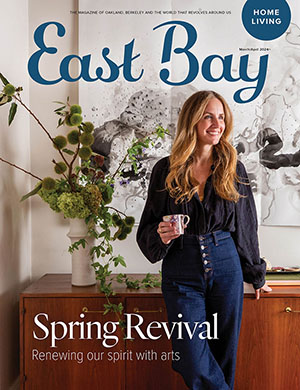Photo by Nathan Dumlao.
Pattern recognition 101: Jack London Square, early morning. The steely grays of the sky and water meet the steely grays of the Bay Bridge in a fog dense enough to spatter my shoulders like rain—a fantastical composition of liquid; solid and vapor all in one color. By 10am the marine layer will be gone, replaced with high, brilliant skies. Beautiful in its own right, that high-def articulation of wave and girder, gesso-white gull feathers and grimy signage. But for now, nothing so crude as clarity. Glorious ambiguity, easy on the eyes, not revealing too much at once, leaving plenty to the imagination.
That’s what we’re about around here at 6:30 in the morning, and the perfect beverage for that has to be the cappuccino, the beverage named for its supposed resemblance to the brown robes and cowl of a Capuchin friar. A drink named for a type of Franciscan, at the edge of the bay whose namesake was the great treehugger Saint Francis of Assisi, robed in a billowing white cloud. In this case, Blue Bottle’s Hayes Valley is in the mix (dense, viscid terracotta crema, fern-frond mandala painted in bright-white, aromatics favoring chocolate and baking spices; pretty impeccable), but it’s not the only game in town. Love North Beach all day long (I sure do) and give Seattle its propers, even though it’s always self-administered those pretty assertively, but Alameda County is God’s Country if your god is a coffee-god. And any proper love letter to the East Bay should arguably be penned in the sepia-rust color of good espresso.
Though the story of Bay Area coffee largely begins in 19th-century San Francisco, with the Hills Brothers’ and Folgers’ empires pioneering ways to preserve, mass-produce and mass-distribute pre-ground coffee to gold prospectors and the towns that leapt up in their wake, the East Bay has cultivated a very large-and-looming influence in a relatively short period of time. If the first wave was San Francisco’s, Oakland and Berkeley ran the second.
The book of Genesis opens on April 1, 1966, when second-wave luminary Alfred Peet opened his doors in North Berkeley. Add Carlo di Ruocco’s entry onto the scene with Oakland’s Mr. Espresso in 1976, and the begats keep coming. Blue Bottle. Bicycle. Highwire. AKA. Slojoy. From Artis to Zolo, the East Bay’s proliferation of third- and fourth-wave coffee roasters—strongly led by Berkeley and Oakland—rivals anyones.
Third-wave-and-beyond coffee, loosely defined as having an intense focus on the craft and sourcing of the product versus the “experience” of it, can be a mixed bag (occasionally the fetishist vibe is intense enough to make me feel a little skeezy about how much I am enjoying my coffee). But honestly? Most days I’m disinclined to put anyone down for valuing craft or focusing on mindful sourcing. (I confess I’m not above rolling my eyes at ultra-florid tasting notes, or tapping my toes when that attention to detail means it takes 20 minutes to get my order, or questioning my allegiances when “grabbing coffee” for two becomes a $15-dollar event; nobody’s perfect.)
And hey, in a coastal region, the urge to look at “waves” is understandable, but it forces certain oversimplifications. Peet’s wasn’t ever exactly Starbucks (even though their stories are famously enmeshed), but it stopped feeling like a local East Bay institution a long time ago. Blue Bottle, despite being an Oakland native, arguably went to school in San Francisco, and somehow it feels slightly off to either claim it as an East Bay entity or to exclude it, since the “fourth wave” seems to have included the aggregating and corporatizing of the third (think Blue Bottle in Tokyo or micro-produced, single-origin Kenyan beans on the shelves of your local supermarket or big-box store).
However you want to define the terms while you’re standing at the edge of the Bay with your cappuccino or your swanky pour-over, one thing that becomes clear is that waves have complex behaviors. They interact, intermingle, influence each other and occur simultaneously. Some have more energy than others. But they’re all the same water.
This is a truth East Bay coffee people seem to have internalized really well—our coffee scene is dense and diverse, but there’s gloriously little sense of any either-or mentality. Producers speak of one another with respect, and seem to celebrate their small differences and distinctions (and enjoy one another’s craft and imagination). At Red Bay, in Oakland’s Fruitvale neighborhood, you can bag a supremely tasty and visually stunning charcoal latte and know you’re supporting a community-minded, Black-owned indie business and helping to enable their continued efforts to support other local foodies, activists and artists.
Head over to Slojoy on Webster and grab a wonderfully rich and non-sugary mocha and take advantage of their sweet-natured pay-it-forward program (you can pre-buy a drink for some unknown stranger who comes to the window after you; it’s lovely). Getting your beans from sustainability-conscious, blend-forward Bicycle Coffee in pandemic times can be a huge blessing for the sequestered; Fair Trade certified organic beans are available for eco-friendly, cyclist-delivery to your door. North Berkeley’s Artis up-levels the definition of “fresh” by roasting same-day.
If you’re like me and grew up in the East Bay in the 1980s, you might have had certain coffee allegiances. They were likely to be cafés versus “brands,” unless you were a card-carrying North Berkeley Peetnik (when I lived in Boston after college my Oakland-native roommate and I found that even a couple of hyper-frugal grad student types could phone in an order for a couple pounds of Peet’s Arabian Mocha Sanani and have FedEx second-day the beans for less than it cost to score way crappier beans at the local shop. It seriously helped with morale).
I didn’t question the provenance of the beans at Café Milano or Edible Complex or Café Roma—as a teen I wanted to know how solid of a latte they made and what kind of people hung out there (especially around UC Berkeley, people’s coffeehouse preferences seemed like a meaningful comment on their personalities—the question functioned almost like the Harry Potter Sorting Hat). Ambiance ruled. The actual coffee mattered, but it was honestly secondary, and mostly over-roasted enough that one could be forgiven for not discerning huge differences.
In this supremely weird moment, the “experience” piece is pretty thoroughly upended—and perhaps that is an additional opportunity to enjoy a coffee moment that has become more about our relationship with the stuff in the cup. The scene is less about the scenery these days. With “good coffee” being much more the rule than the exception, quality alone is unlikely to distinguish a coffee business around here. And with small businesses gravely endangered by our current situation, we’re more inclined to be discerning about where our limited discretionary funds go. And that can (and arguably should) be about the people involved in the complicated chain of events between someone harvesting coffee cherries and you finger-signing a touchscreen.
For me these days, that often means skipping the roaster-purveyor paradigm and going to my backyard indie café, Lafayette’s Papillon, where the draw isn’t a pristine terrarium-landscape of glass and hardwood and bromeliads clinging to the walls or a monomaniacal obsession with single origin Superbeans (truth be told, I don’t even pay attention to where they source them). It’s the quirky assemblage of huge-hearted local owners who came here as refugees, local elders debating politics, local artists whose canvases and textiles are available for sale and half-feral local kids. It’s the regular meeting place for multitudes of writer’s groups, after-school academic tutors, Scrabble games, kvetch-sessions and timid first dates. It’s not glamorous. It is, like the town, a mix; maybe a little provincial, but also surprisingly cosmopolitan.
During the lockdown, patrons have taken advantage of the large adjacent parking lot to create an outdoor, social-distancing-friendly simulacrum café—most mornings you can find a diverse and robust group of locals (and cyclists from nearby trails) latte-tailgating outside; one of my friends now brings extra camping chairs and spare disposable masks, but also upturned wastepaper baskets for end tables, small area rugs he collects off Craigslist and even a lava lamp (hooked up to his car) for ambiance.
Which brings us back to where we started, and perhaps where all human things start: pattern recognition. You don’t have to be a student of Gestalt psychology to understand human minds enact the same patterns over and over—we need them, and we do whatever we have to do when there’s disruption to a pattern we depend on. Café culture is a mainstay of coastal-California life, one that provides a lot more than just access to coffee. Local coffee shops provide many of us with satellite office spaces, artist’s mini-retreats, extra living rooms, exposure to live music and poetry, gallery walls, activism rally points and community hubs.
Coffee is a fundamentally social beverage in a lot of ways, even when our social structures are under siege by, say, a virus. If we drink alcohol to blunt the edges and get a brief respite from life in our own heads, it’s likely we gravitate toward coffee for the opposite reasons—we feel sharper, more grounded, keener, energized, more capable. But as much as that’s the work of alkaloids on the nervous system, we also find the ritual itself meaningful and activating. Right now, participation in sober social rituals seems more meaningful than ever, as does being mindful about how and where we spend our petty cash. In this regard, as in so many, we’re an enviably wealthy region.














